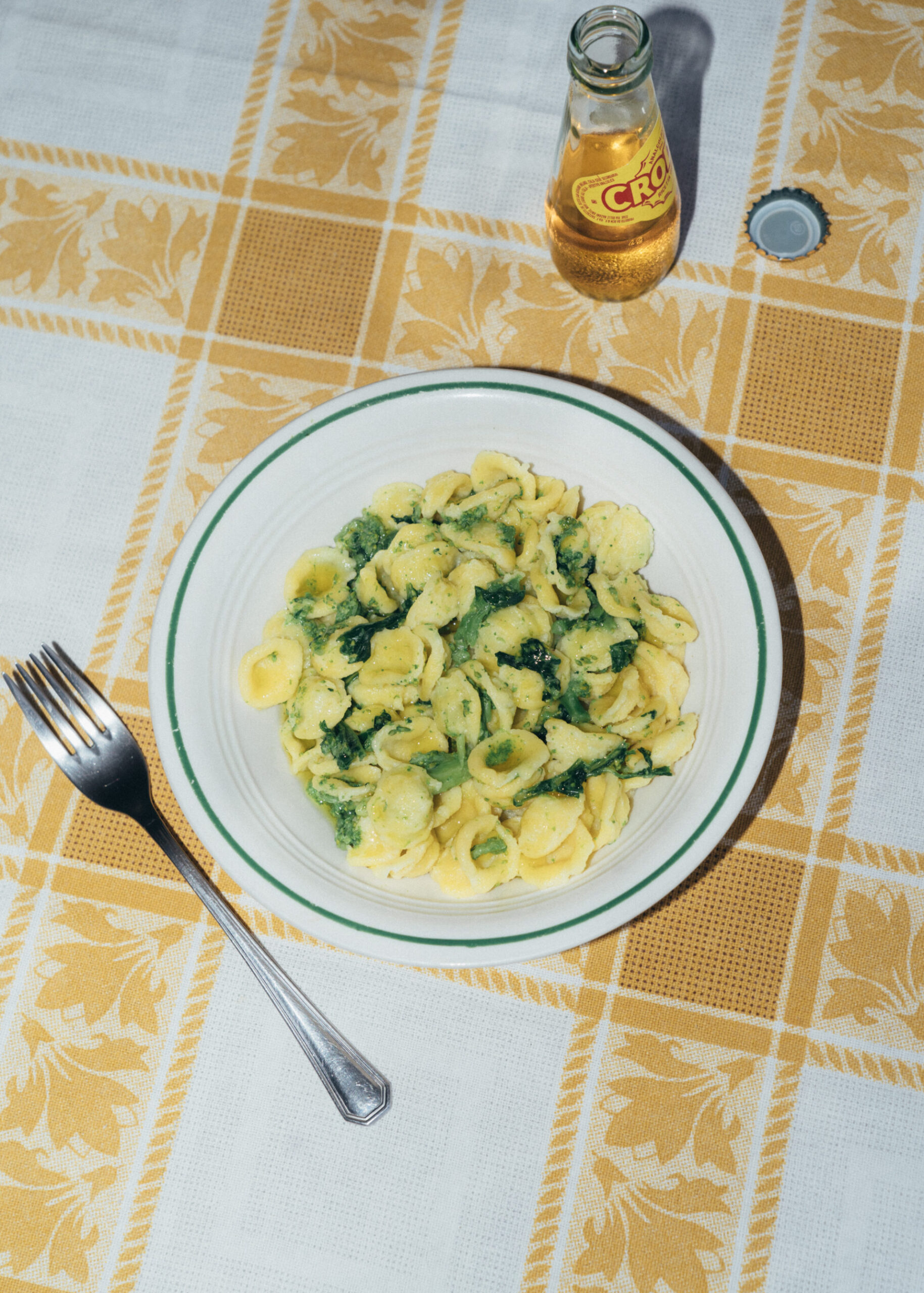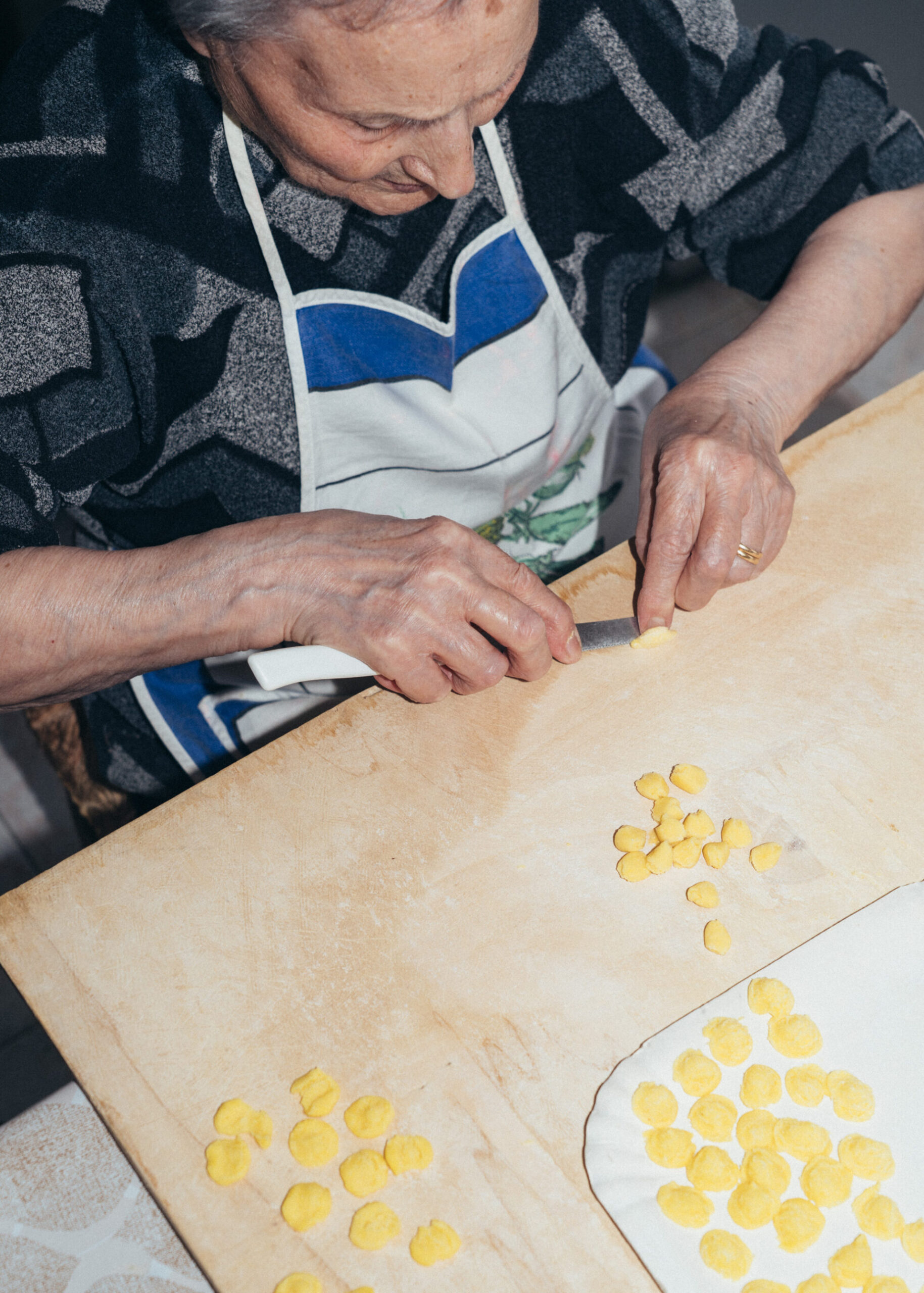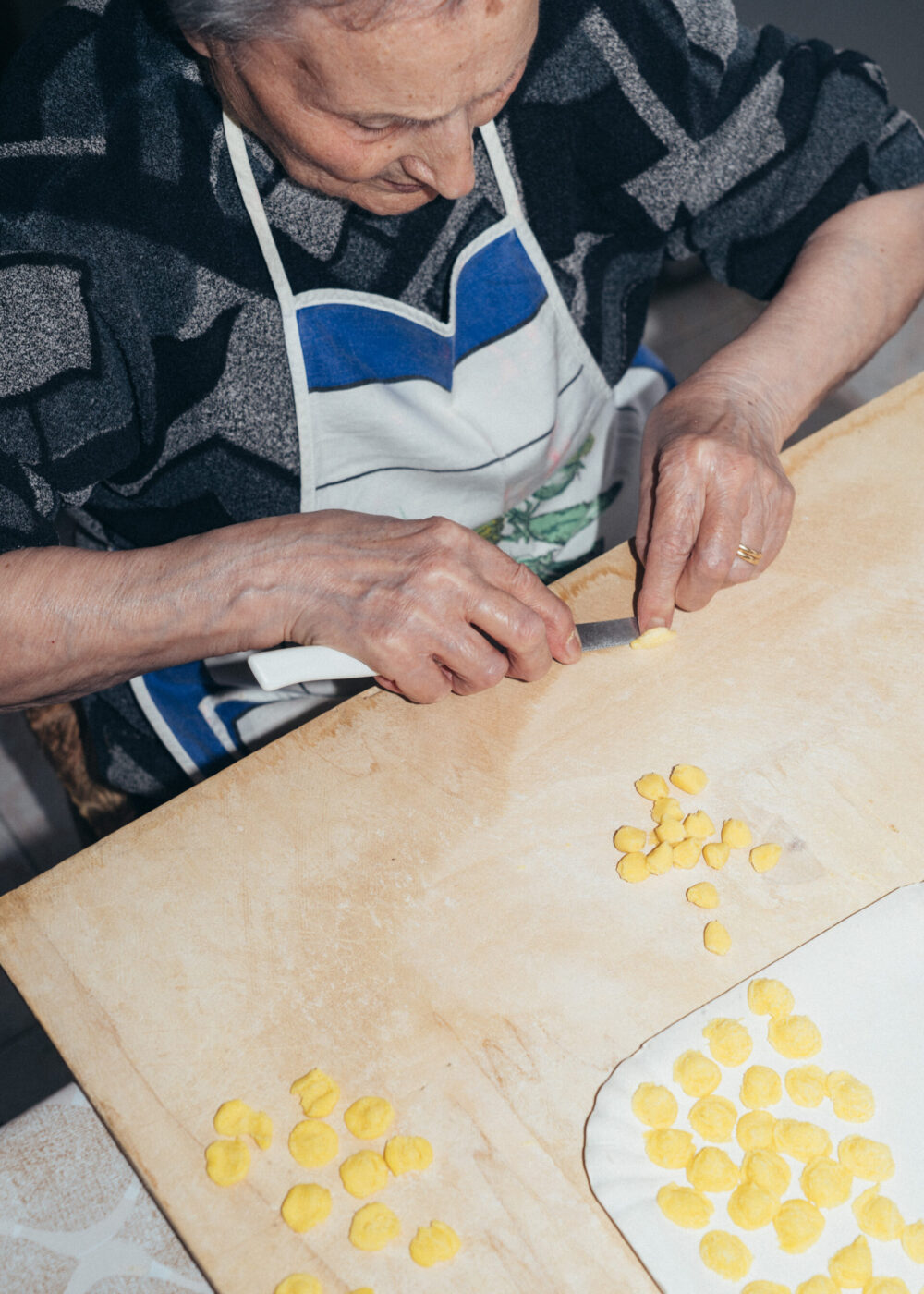Editor’s Note: This recipe comes from Mediterranea by Anastasia Miari (Quadrille, £28; photography © Marco Argüello), which includes recipes by and stories of nonne from all over the Mediterranean. This classic Pugliese duo is one of those impressive dishes that actually isn’t all that hard to make—once you get Nonna Maria’s pasta making technique down.
In the very far north of Puglia, Maria Addolorata (“Maria the sorrowful”, named after the patron saint of her town) lives surrounded by lush green fields and the Puliese mountains. Locals call this the Tavoliere, which is the name this nonna also gives to the large wooden board that she uses to roll her orecchiette on.
Apricena was once a mining region, but now the industry has trickled out. San Severo, known to be the headquarters of the local mafia, is the neighboring town, and the area is steeped in poverty. Still, we eat a plentiful lunch of fresh mozzarella in hefty, chewy white balls and tomatoes that sing with the flavors of summer in the company of Maria Addolorata and her granddaughters. As she welcomes me into her kitchen, she says her house is “small”. I say it’s abundant in everything you can hope for in life: good-quality fresh ingredients, family, and love. Plus, an impressive collection of original 1960s furnishings and the kinds of tiles that I can spend all day photographing.

Photo from Mediterranea by Anastasia Miari (Quadrille, £28; photography © Marco Argüello)
There can be nothing more satisfying than eating your own homemade pasta, and I find this, of all the shapes, to be one of the easiest and most satisfying to master. Orecchiette (meaning “little ears” on account of their shape) with cime di rapa (rapini) is a pasta dish that is surprisingly light. The cime di rapa—a loose relation to broccoli, but with a finer stem—is cooked until very soft, so that it breaks down into a sauce around the homemade pasta. As an alternative to cime di rapa, you can use broccoli and its leaves or Tenderstem broccoli (broccolini). The key here is to add a good drizzle of quality olive oil at the end.
Serves 2
INGREDIENTS
- 220 g (7 3/4 oz or 1 3/4 cups) fine durum wheat flour (semola rimacinata/semolina/farina), or as needed
- 1/2 tablespoon extra virgin olive oil, plus extra to serve
- 100 ml (3 1/2 fl oz or scant 1/2 cup) lukewarm water, or as needed
- 100 g (3 1/2 oz) cime di rapa (rapini), trimmed (or Tenderstem broccoli/broccolini)
- Flaky sea salt
PREPARATION
- Tip 180 g (6 1/2 oz or scant 1 1/2 cups) of the flour onto a clean work surface and make a well in the center. Pour the oil into the well and add a pinch of salt.
- Add a little of the water to the well (go slowly, as you may not need the full amount, depending on your flour) and start to work the flour into the water at the edges of the well using your fingers in a circular motion, pulling in enough to absorb the water. Repeat until all the flour is incorporated and a dough starts to form—it should be fairly scraggy at this point, but you can use your hands to scrunch the dough together into a more cohesive lump.
- Now start to knead the dough—it shouldn’t be dry or sticky, so if it is, add a touch more water or flour accordingly. Knead for 10–15 minutes, using the heel of your palms to push the dough away from you and your fingers to pull it back and fold it over, turning the dough clockwise as you go—this will make it soft, smooth, and slightly bouncy.
- Once the dough is in a smooth ball, cover it with a damp dish cloth or cling film (plastic wrap) and leave to sit for 10 minutes at room temperature.
- Once rested, break off a small section of the dough and roll it out into a long, 1 cm (1/2 inch) thick rope-like shape with the palms of your hands against the work surface. Make sure to re-cover the rest of the dough so it doesn’t dry out while you work.
- Using a sharp knife, cut the rope into small pillows, about 1 cm (1/2 inch) long. These will become your orecchiette. Find a blunt knife with a rounded tip and sprinkle a little of the remaining flour on the work surface. Hold the knife so that the blade faces away from you (almost flat) and press the edge of the tip lightly but firmly into one of the pillows of dough at the edge farthest from you, at a slight angle. Drag it along the surface towards you, applying consistent pressure. It should curl over the knife. Flick the piece of dough off the knife and turn it inside out by pushing your thumb into the crevice to help create a dome shape. The dome should have a slightly rough texture, which will help to hold on to flavor when cooked.
- Get a rhythm going to shape the rest of the orecchiette in the same way, placing them on a baking sheet lined with baking parchment or a board to dry out a little while you repeat the process with the rest of the dough.
- Bring a saucepan of water to the boil and add 1 tablespoon of salt. Add the cime di rapa and simmer for 5 minutes, or until nice and tender. Remove with a slotted spoon and set aside in a bowl.
- Add the pasta to the same water and cook for 2–4 minutes over a medium-high heat until al dente. Add the cime di rapa back in for a second to reheat, then drain all together.
- Serve and add a drizzle of olive oil before tucking in.


